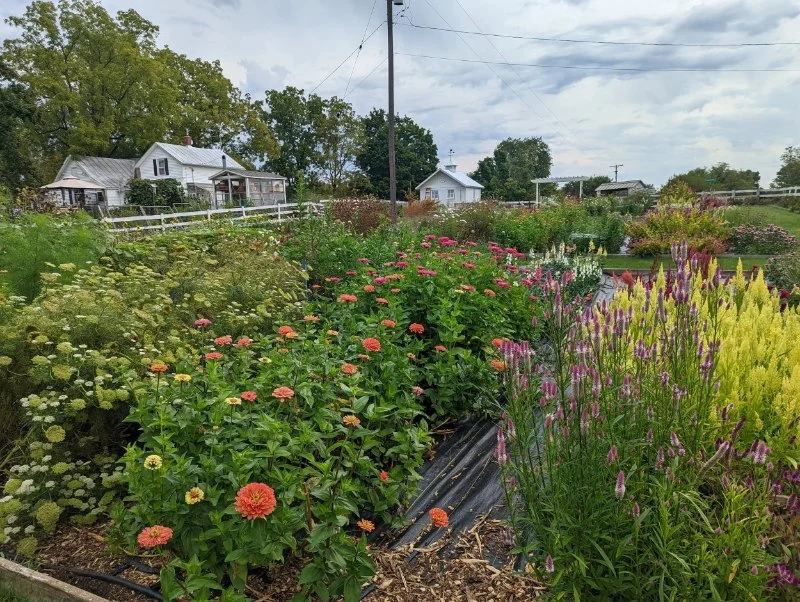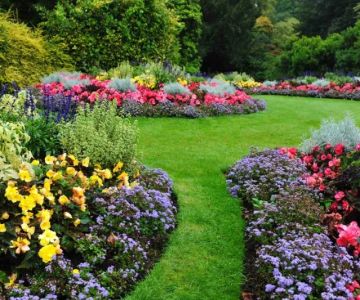
- 1. What is Succession Blooming?
- 2. Benefits of Succession Blooming
- 3. Steps to Plan a Garden for Succession Blooming
- 4. Tips for Maintaining a Succession Blooming Garden
1. What is Succession Blooming?
Succession blooming is a gardening technique that involves planting and scheduling flowers so that they bloom at different times of the year, creating a continuous show of color and beauty. The idea behind succession blooming is to rotate the plants in your garden so that when one batch of flowers fades, another batch is ready to take over. This ensures that your garden remains vibrant throughout the entire growing season, even during the off-bloom periods of certain plants.
By carefully choosing your plants and understanding their bloom cycles, you can create a garden that looks fresh and lively all year round. Succession blooming can be applied to various types of plants, including annuals, perennials, and even vegetables.
2. Benefits of Succession Blooming
Succession blooming offers a variety of advantages for garden enthusiasts. Some of the main benefits include:
- Continuous Color and Interest: One of the main advantages of succession blooming is that your garden will look colorful and interesting at all times. You’ll never have to deal with dull, empty spaces as flowers bloom one after another.
- Efficient Use of Space: By planting flowers with different blooming periods, you ensure that your garden space is always utilized to its fullest potential, providing beauty from early spring to late fall.
- Attracts Pollinators All Year: A variety of blooming plants will attract different types of pollinators throughout the growing season, ensuring that your garden is vibrant and ecologically beneficial.
- Extended Growing Seasons: Succession blooming helps extend the growing season of your garden by overlapping the blooming periods of different plants. This allows you to enjoy your garden for a longer time.
3. Steps to Plan a Garden for Succession Blooming
Planning a garden for succession blooming involves careful thought about which plants to choose and when to plant them. Here’s how you can create a garden that blooms in succession:
- Choose Plants with Different Blooming Times: Start by selecting plants that have varying blooming periods. For example, you can choose early-blooming flowers like crocuses, followed by mid-spring blooms like tulips, and finish the season with late-blooming varieties like chrysanthemums or asters.
- Group Plants by Bloom Period: Grouping plants by their bloom period allows you to visually plan when each flower will be in full bloom. This will also help you organize the space efficiently and ensure that each plant gets the right amount of sunlight and water.
- Consider Planting Annuals and Perennials: Mixing annuals and perennials in your garden will help you achieve a longer blooming period. While annuals typically bloom for a single season, perennials will return year after year, often with different bloom cycles.
- Stagger Planting Times: Planting flowers at different times of the year is key to succession blooming. For example, plant cool-season flowers in early spring and warm-season flowers in late spring. This staggered approach helps maintain a continuous flow of flowers.
- Maintain Healthy Soil: To ensure a consistent and healthy bloom throughout the year, it’s essential to keep your soil in top condition. Regularly fertilize and amend your soil to ensure it provides the necessary nutrients for your plants.
4. Tips for Maintaining a Succession Blooming Garden
Once your garden is planned, maintaining it requires ongoing care to ensure that your succession blooming garden thrives. Here are some helpful tips:
- Deadhead Flowers Regularly: Remove spent flowers to encourage new blooms. Deadheading is especially important for annuals, as it keeps them blooming throughout the season.
- Mulch to Retain Moisture: Apply a layer of mulch around your plants to help retain moisture, suppress weeds, and maintain consistent soil temperature. This helps your plants thrive during their blooming periods.
- Monitor for Pests and Diseases: Keep an eye on your garden for any signs of pests or diseases. A well-maintained garden is less likely to be affected by these problems, but early detection is key to preventing damage.
- Adjust Watering Needs: Different plants have different watering needs, so adjust your watering schedule accordingly. Ensure that your plants receive enough water during their blooming periods but avoid overwatering.
By following these tips and planning your garden carefully, you can enjoy a beautiful, colorful garden that blooms from spring to fall without missing a beat!
For more helpful garden planning tips and the best garden supplies, visit Beautiful Landscapes to find everything you need for your perfect succession blooming garden.








 Greenwise Organic Lawn Care of Milwaukee4.0 (55 reviews)
Greenwise Organic Lawn Care of Milwaukee4.0 (55 reviews) Eden Landscaping LLC5.0 (29 reviews)
Eden Landscaping LLC5.0 (29 reviews) Walmart Patio & Garden Services0.0 (0 reviews)
Walmart Patio & Garden Services0.0 (0 reviews) Cut and Go Landscaping4.0 (8 reviews)
Cut and Go Landscaping4.0 (8 reviews) Golden Sun Landscaping & Tree Service4.0 (10 reviews)
Golden Sun Landscaping & Tree Service4.0 (10 reviews) Threeboyslandscaping5.0 (3 reviews)
Threeboyslandscaping5.0 (3 reviews) How to Plan a Backyard for Entertaining Large Groups
How to Plan a Backyard for Entertaining Large Groups How to Design With Movement: Plants That Sway Gracefully in Your Garden
How to Design With Movement: Plants That Sway Gracefully in Your Garden How to Grow Groundcovers That Replace Traditional Lawns
How to Grow Groundcovers That Replace Traditional Lawns How to Landscape for Seasonal Wildlife Attraction in Your Garden
How to Landscape for Seasonal Wildlife Attraction in Your Garden How to Manage Weeds Organically Without Chemicals
How to Manage Weeds Organically Without Chemicals How to Build a Sustainable Backyard Using Native Materials: A Step-by-Step Guide
How to Build a Sustainable Backyard Using Native Materials: A Step-by-Step Guide